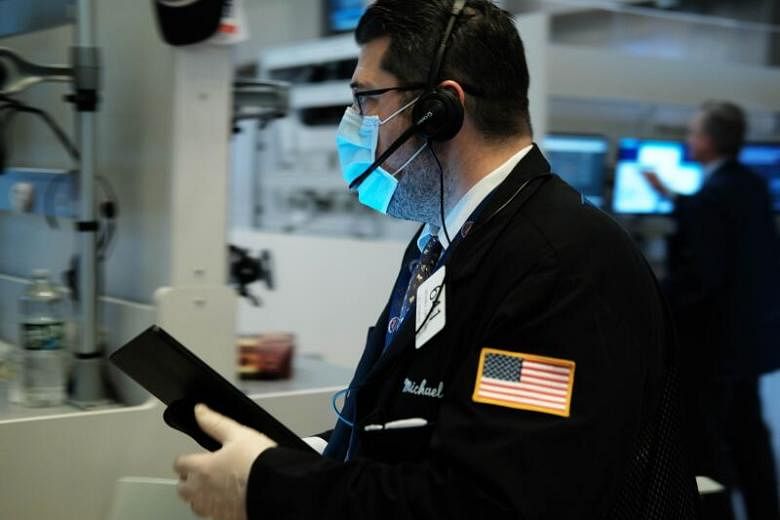NEW YORK (REUTERS) - Wall Street's slide deepened on Monday (March 23) as the rapidly spreading coronavirus forced more US states into lockdown, overshadowing unprecedented moves by the US Federal Reserve to shore up credit across the economy.
After recently cutting interest rates to near zero, the Fed will now lend against student loans and credit card loans, as well as back the purchase of corporate bonds and make direct loans to companies.
Announcement of the extraordinary measures briefly lifted US stock index futures before Monday's trading session began, but the mounting death toll from Covid-19 and a tide of lockdowns more US states quickly sent the main indexes into the red, putting the S&P 500 on pace for its worst month since World War II.
"What the Fed did is important because it does help in the credit markets. But it's not enough from an equity market perspective," said Willie Delwiche, investment strategist at Robert W. Baird in Milwaukee.
"What we now need is leadership out of Congress to pass some sort of stimulus bill, because what the Fed's doing is relieving some problems, but it doesn't do enough to solve to solve what's out there."
Investors had hoped the US Senate would clear a US$1 trillion-plus (S$1.46 trillion) coronavirus stimulus package over the weekend, but Democrats and Republicans were still scrambling to come to an agreement.
Maryland, Ohio, Louisiana and Delaware joined New York and California in asking people to stay home, foreshadowing a near halt in economic activity and more pain for US equities, and prompting several analysts to slash their growth forecasts.
Goldman Sachs expects an outright contraction in global real gross domestic product in 2020 on the back of a 24% plunge in US real GDP in the second quarter: two-and-a-half times as large as the previous post-war record.
The S&P 500 has experienced a US$9 trillion wipeout to its value since the benchmark index hit a record high last month. A rush for safe-haven assets like government bonds caused US Treasury yields to fall on Monday.
The S&P 500 is down about 34% from its February record high, its lowest level since fears of the coronavirus swept across Wall Street.
The Dow Jones Industrial Average dropped 3.12% to end at 18,576.04 points, while the S&P 500 lost 2.96% to 2,236.7.
The Nasdaq Composite dropped 0.27% to 6,860.67, its overall decline cushioned by a 3.07% rise in Amazon.com .
"What we really need to turn things around is a sense of closure - not on the virus, but on the response to the virus," said Stephen Massocca, senior vice president at Wedbush Securities in San Francisco. "Once the market sees that, I think the market will rebound considerably."
Declining issues outnumbered advancing ones on the NYSE by a 3.18-to-1 ratio; on Nasdaq, a 1.62-to-1 ratio favored decliners.
The S&P 500 posted no new 52-week highs and 224 new lows; the Nasdaq Composite recorded two new highs and 525 new lows.











